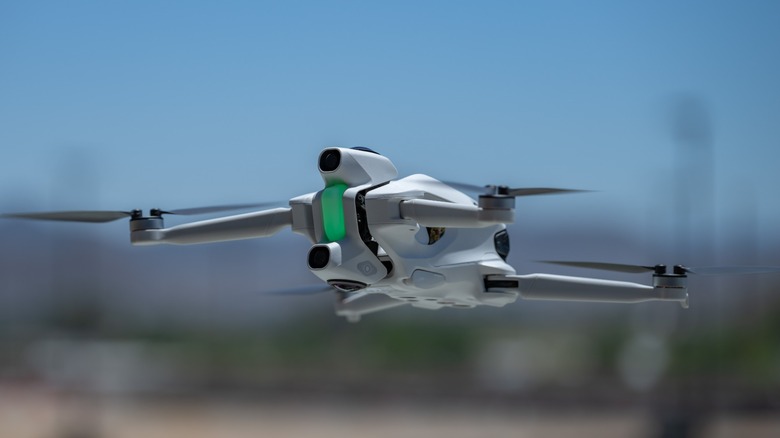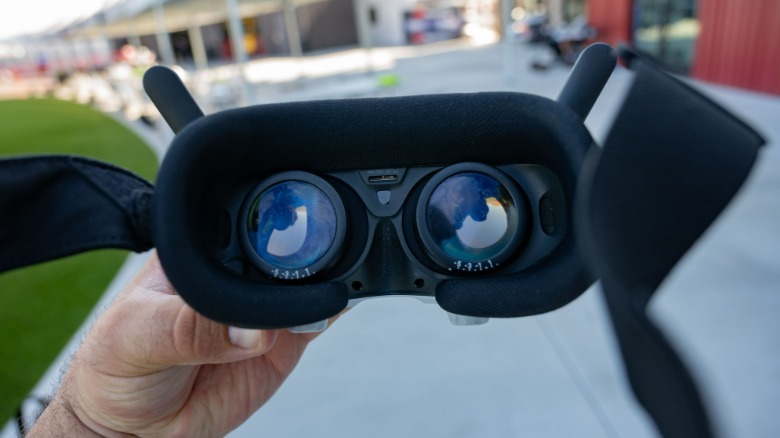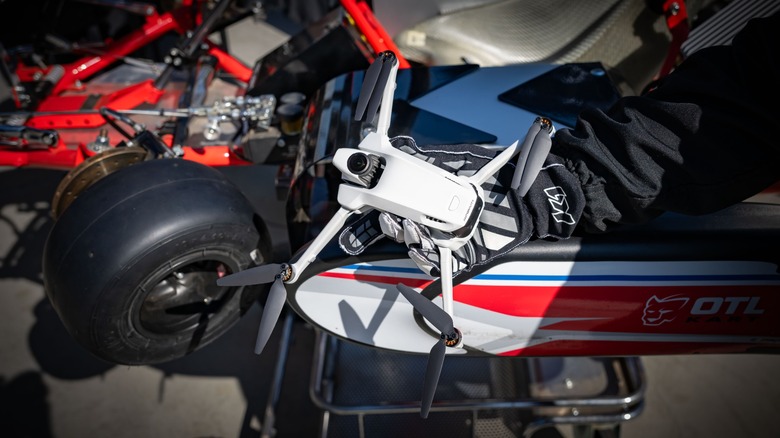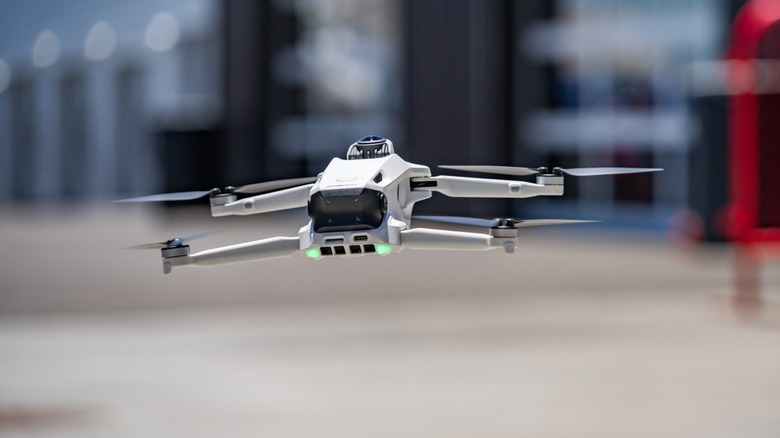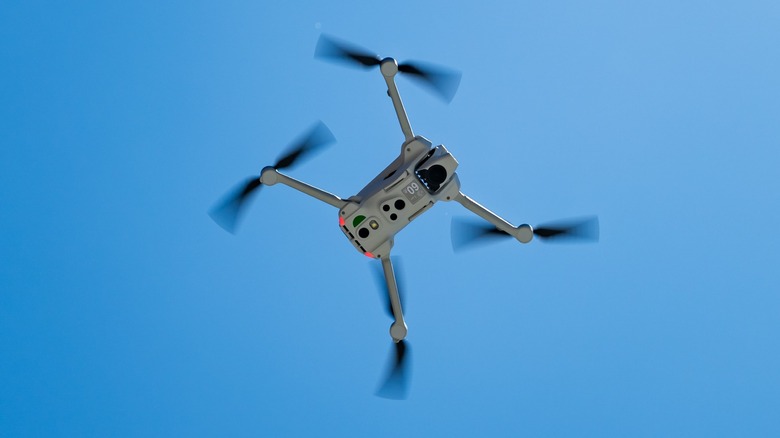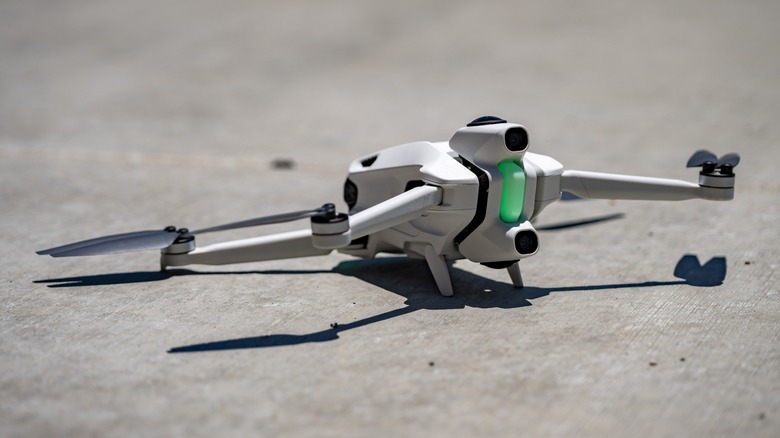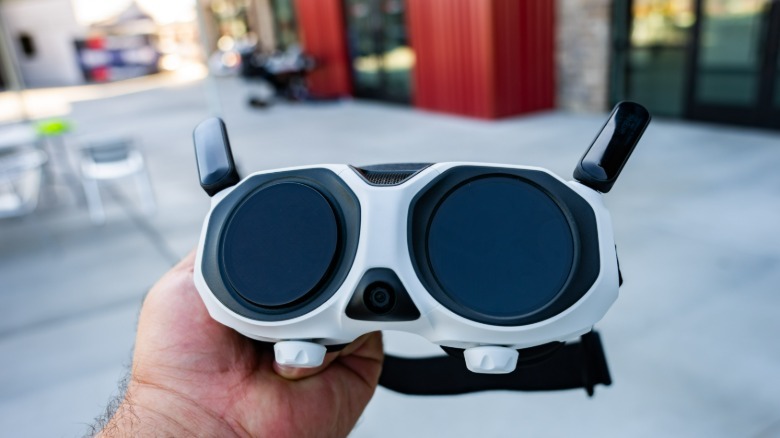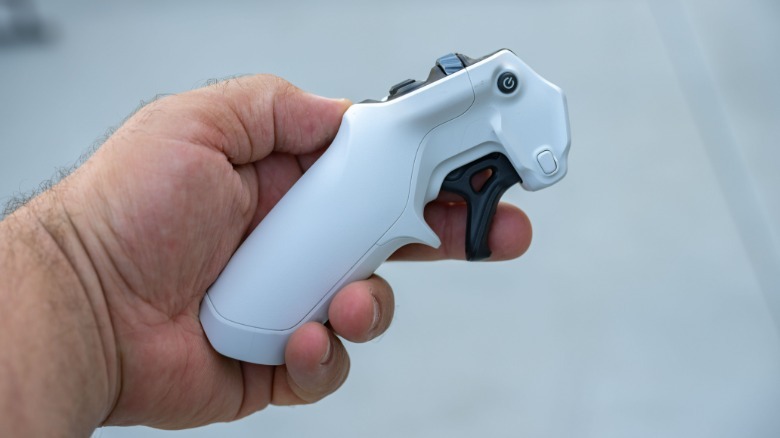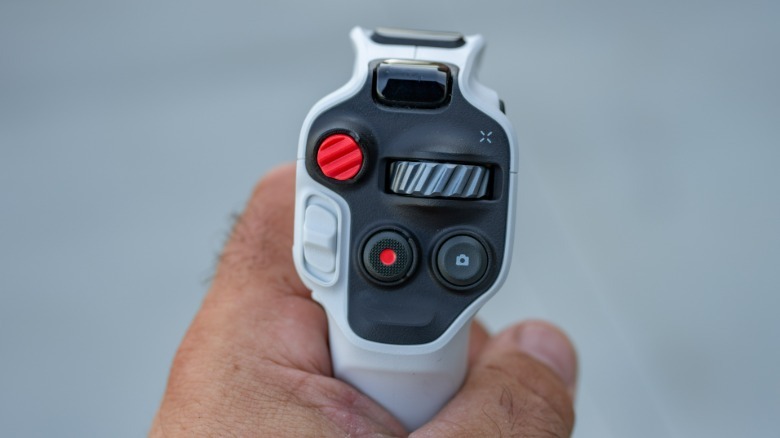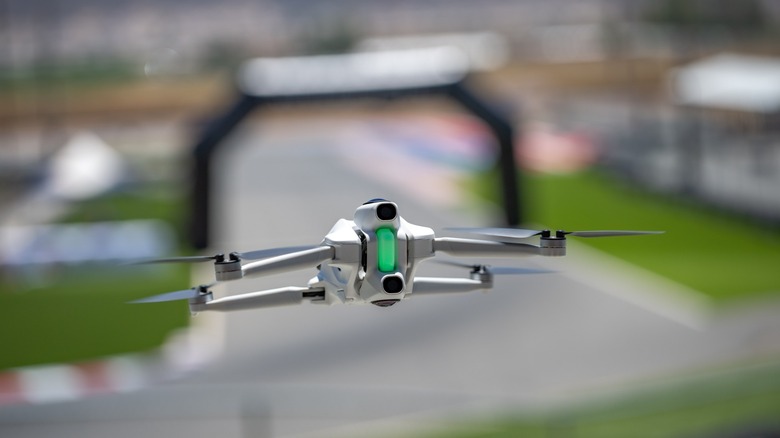I Tried Insta360's New Antigravity Drone, And Here's Why I Think It's The Shakeup The Industry Needs
I didn't exactly know why I was on a plane bound for Burbank and the Hollywood hills, but the cloak and dagger secrecy of Insta360 and an as-yet unnamed new company certainly piqued my interest enough to roust me from my cozy little corner of the Pacific Northwest. When revealed, I understood why such a tight-lipped mystery had been maintained, and why the Antigravity A1 drone really does need to be seen and experienced to understand what it's all about.
Antigravity is a company which has been incubated and spun-off by Insta360, a company which has rapidly established itself as the leader of the fledgling 360 camera market. Antigravity and its first product, the A1, are in fact the result of years of R&D aimed at shaking up the consumer drone sector, which for some time now has been the near-exclusive realm of DJI. The Antigravity A1 challenges this status quo by offering something entirely new and different, which is something that's rather rare in highly developed product genres. After trying it out myself, I definitely think they're on to something.
Introducing the Antigravity A1
I'm familiar with the idea of using 360 cameras on a drone, and in fact have used such cameras myself with the Insta360 Sphere, a camera designed for the DJI Air 2S. It clamped onto the drone, and was designed so that the drone itself was excluded from view. It was a cool concept, and I've long hoped to see that same concept integrated into a drone. That's essentially what the Antigravity A1 is, but it's also so much more than that.
The Insta360 Sphere was a camera which just passively recorded while you flew the drone, and you had to wait till afterward to see the 360 footage; the Antigravity A1, on the other hand, allows you to see directly through the 360 camera as you're flying, using FPV style goggles. However, unlike typical FPV drone goggles, the A1's goggles function more like virtual reality goggles. Instead of locking you into a fixed view from a single camera lens, with the A1 you can look around freely as you fly, regardless of the orientation of the drone.
The result is a uniquely immersive, VR-style experience that's unlike anything I've ever experienced. I suppose it's really more augmented reality than virtual reality, though that description doesn't quite fit either. The truth is that what the Antigravity A1 does is genuinely unique.
Taking to the skies
As fun as traditional FPV drones may be, you're always very aware you're piloting a machine, and not actually flying yourself. With the A1, I felt myself becoming increasingly drawn into the experience, and disconnected from my earth-bound body. Looking down never failed to induce a giddy feeling of vertigo, and I felt a phantom sensation of motion when flying the drone around. Another novel side effect was how my brain interpreted sounds my ears were hearing as coming from the sky around the drone. For example, I was startled when a loud motorcycle roared past on a nearby road because I was convinced I was about to be hit by a helicopter.
Despite the early firmware and software not delivering the smoothest experience, it was nonetheless exhilarating, and at that moment I saw the potential of what this drone could do. I provided Antigravity with a number of ways they might improve the A1, and headed back to the Pacific Northwest.
Go-karts and big improvements to the drone
Two months later I was on my way back down South to California, and was whisked off to the inland empire and a gleaming new professional K1 Gokart track. This turned out to be an ideal venue at which to see just what the A1 is all about. Where it requires years of dedication and hard work to pull off high-octane FPV shots of an action sport such as go-karting, with the Antigravity A1 all you have to do is fly in a straight line and then create those epic camera movements in post.
What really impressed me was just how much progress had been made since my first experience with the A1, and how much of that progress was directly as a result of input they received from experts who had tested it and provided feedback. That willingness to engage with the community seems to have paid off in a big way. Gone are the latency and compression issues I experienced previously, and the experience of flying is now genuinely immersive to a startling degree.
Tantalizing videography capabilities
The hardware of the camera itself is very similar to that of the Insta360 X5, so at launch that's roughly what you should expect from it in terms of its image capture capabilities. 8K recording wasn't available at this event, but it is coming, and even at a reduced resolution I am very happy with the footage I was able to capture. The image stitching is particularly impressive in the A1, and I was rarely able to discern where the image captured by one camera ended and the next began.
The A1 is a tiny little drone, and it only weighs 249g, making it much easier to fly in many locations, and while the exact details are under wraps for now, I was extremely impressed by how long the drone was able to stay in the air. Safety features such as return to home are present in the drone as well, and it even features a payload detection system to prevent misuse and modification for nefarious purposes.
A tough little drone with a few quirks that need work
I also discovered by accident that the A1 is surprisingly robust, which I otherwise wouldn't have suspected. The large number of drones in the air caused a brief moment of interference as I was flying along the track, and the drone collided with a lamp post. I was sure I'd totalled it, but upon retrieval it was found that the drone had come through basically unscathed. The collision had merely caused one of the drone's arms to fold in, and it had managed to recover enough to slow its descent and deploy its landing gear before touching down. That landing gear is itself quite marvelous, particularly given that it was able to be integrated into a 249g drone.
The one remaining noteworthy issue I experienced was that the A1 seems a bit limited in terms of range. However, given how much Antigravity has improved the drone in the span of a few months, I feel fairly confident in their capability to improve upon this and other aspects of the A1 prior to launch.
Challenging the elephant in the room
It's no secret that there's not much competition in the modern drone market, with DJI dominating the current consumer landscape nearly completely. Once promising players in the space such as 3DR and GoPro have dropped out, while others such as Autel and Hoverair merely nibble at DJI's crumbs, never really being able to nab a sizable slice of the pie. The Antigravity A1 is the first drone in quite a long time which stands out as something genuinely new and exciting from a company other than DJI. With the A1, Antigravity isn't as much taking a bite of the pie as it is baking an entirely new pie of a different flavor.
The A1 offers a totally unique flying experience, one which may be shared with others both during the flight through the exterior display on the VR goggles, and later on in immersive 8K 360 degree video recordings. No other system can do that, and the capability of the A1 to accomplish tasks usually reserved for highly skilled FPV pilots is incredible.
The immersive, motion-controlled virtual reality-style flight is entirely new, and likely to appeal outside of the traditional customers of drones, while the capability to replicate FPV drone shots puts it directly up against products like the DJI Avata 2. The A1 can't fly as fast as an FPV drone, but the A1 can replicate FPV shots which most people couldn't pull off with the Avata.
The upshot is that I very much see Antigravity carving out its own niche filled with both experienced drone pilots and folks who may never have been interested in the hobby before. As unusual as the A1 is, I believe it has greater mainstream appeal than one might guess at first sight.
What's next for Antigravity
The Antigravity A1 is scheduled to launch globally in January 2026, with more details to be revealed closer to launch. If you want to get your hands on an A1 sooner, Antigravity is accepting applications for a co-creation project. Selected participants will receive a pre-production Antigravity A1 to test out and provide feedback to Antigravity. The best ideas provided by testers will be integrated into the retail version, and contributors will have the chance to win a share of the $20,000 reward pool.
While clearly a smart marketing tactic, my own experience with Antigravity has shown how this company really does value community feedback. Yes, inviting creators and members of the press to go go-karting was great PR, but at the same time this event was clearly as much to collect further input from experts in the field with different backgrounds to further shape and hone the A1. This is a rare level of community involvement to see so early in the development of such a product as the Antigravity A1, and if a new drone is going to stand a chance of breaking into such a tough market, this is exactly the way to go about it.
I'll be extensively testing and reviewing the Antigravity A1 later on closer to launch, and I'm certainly eager to dig in and put it through its paces. It's also worth noting that the name "A1" implies an "A2" at some point down the road, and it's exciting to imagine the potential for where the technology in the A1 could go next.
